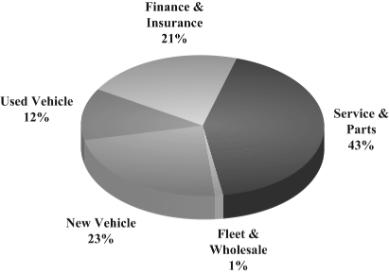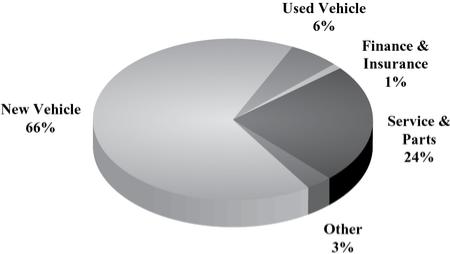The brands we represent in Australia hold a 5.8% market share in the Australian heavy duty truck market, and a 3.5% market share in New Zealand.
PTS. As an alternative to using PTS’ full-service truck leasing or contract maintenance services, we believe that most potential customers perform some or all of these services themselves. They may also purchase similar or alternative services from other third-party vendors. Its full-service truck leasing operations compete with companies providing similar services on a national, regional and local level. Many regional and local competitors provide services on a national level through their participation in various cooperative programs. Competitive factors include price, maintenance, service and geographic coverage. PTS competes with finance lessors, truck and trailer manufacturers, and independent dealers, each of which provides full-service lease products, finance leases, extended warranty maintenance, rental, and other transportation services. Its contract maintenance offering competes primarily with truck and trailer manufacturers and independent dealers who provide maintenance services.
PTS’ commercial and consumer rental operations compete with several other nationwide vehicle rental systems, a large number of vehicle leasing and rental companies with multiple branches operating on a regional basis, and many similar companies operating primarily on a local basis. Because a significant portion of its consumer rentals are used for moving and relocation, PTS competes with local and national moving and storage companies, as well as alternatives such as portable container-based transportation and storage. In its commercial and consumer rental operations, it competes primarily on the basis of equipment availability, geographic location and customer service.
PTS’ logistics business competes with other dedicated logistics providers, transportation management businesses, freight brokers, warehouse providers and truckload carriers on a national, regional and local level, as well as with the internal supply chain functions of prospective customers who rely on their own resources for logistics management. Competitive factors include price, efficient logistical design offerings, equipment, maintenance, service, technology and geographic coverage, and driver and operations expertise. PTS seeks to combine its logistics services with its existing full-service truck leasing and truck rental business to create an integrated transportation solution for its customers.
Human Capital
As of December 31, 2019, we employed nearly 27,000 people, approximately 772 of whom were covered by collective bargaining agreements with labor unions. We consider our relations with our employees to be satisfactory. For example, thirty-three of our dealerships were named to the Automotive News Top 100 Dealerships to Work For in the United States. Our policy is to motivate our key managers through, among other things, variable compensation programs tied principally to local profitability and customer satisfaction. We annually survey our employees to gauge their satisfaction and address any resulting concerns. Due to our reliance on vehicle manufacturers, we may be adversely affected by labor strikes or work stoppages at the manufacturers’ facilities.
Regulation
We operate in a highly regulated industry and a number of regulations affect the marketing, selling, financing, servicing, and distribution of vehicles. Under the laws of the jurisdictions in which we currently operate, we typically must obtain a license in order to establish, operate or relocate a dealership, or operate a repair facility. These laws also regulate our conduct of business, including our advertising, operating, financing, employment, distribution and sales practices. Other laws and regulations include franchise laws and regulations, environmental laws and regulations (see “Environmental Matters” below), laws and regulations applicable to new and used motor vehicle dealers, as well as customer and employee privacy, identity theft prevention, wage-hour, anti-discrimination and other employment practices laws. With respect to online sales, many laws and regulations applicable to our business were adopted prior to the introduction of the Internet, certain digital technologies, and e-commerce, generally. As a result, we are tasked with maintaining compliance in an uncertain regulatory environment.
Our financing activities with customers are subject to truth-in-lending, consumer leasing, equal credit opportunity and similar regulations, as well as motor vehicle finance laws, installment finance laws, insurance laws, usury laws and other installment sales laws. Some jurisdictions regulate finance fees that may be paid as a result of vehicle sales. In recent years, private plaintiffs, state attorneys general and federal agencies in the U.S. have increased their scrutiny of advertising, sales, and finance and insurance activities in the sale and leasing of motor vehicles. In the U.K., the





